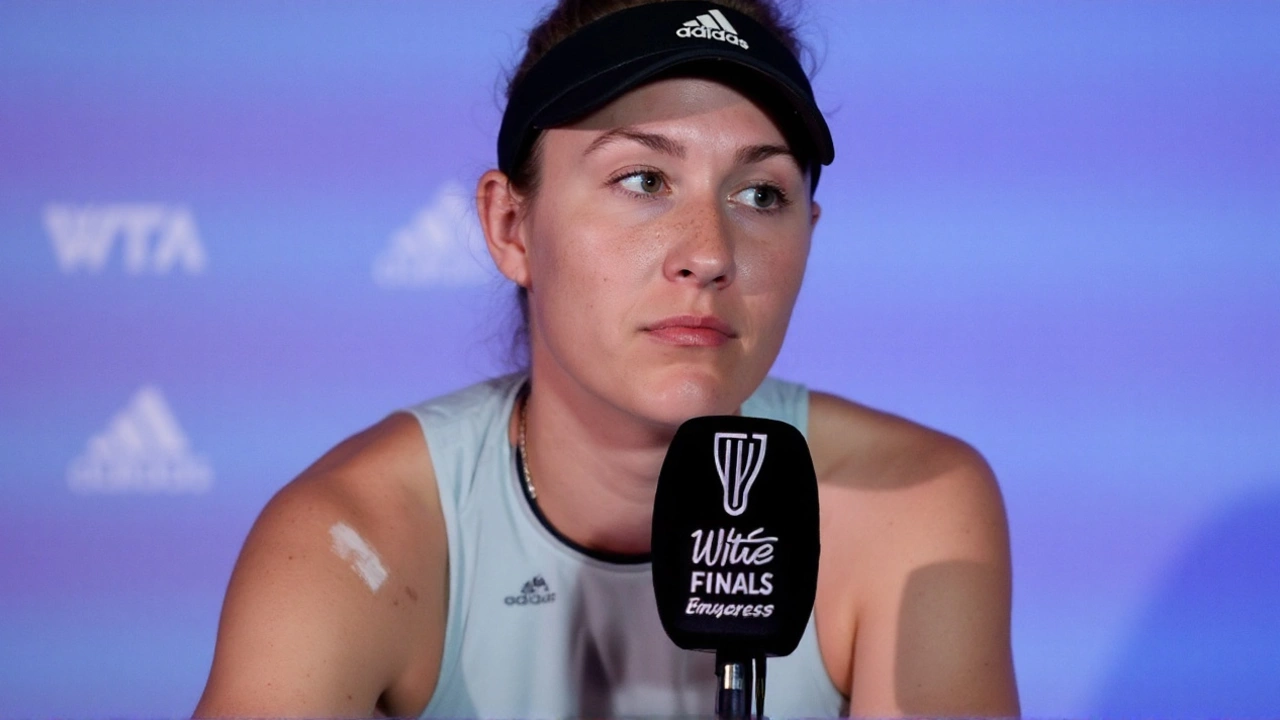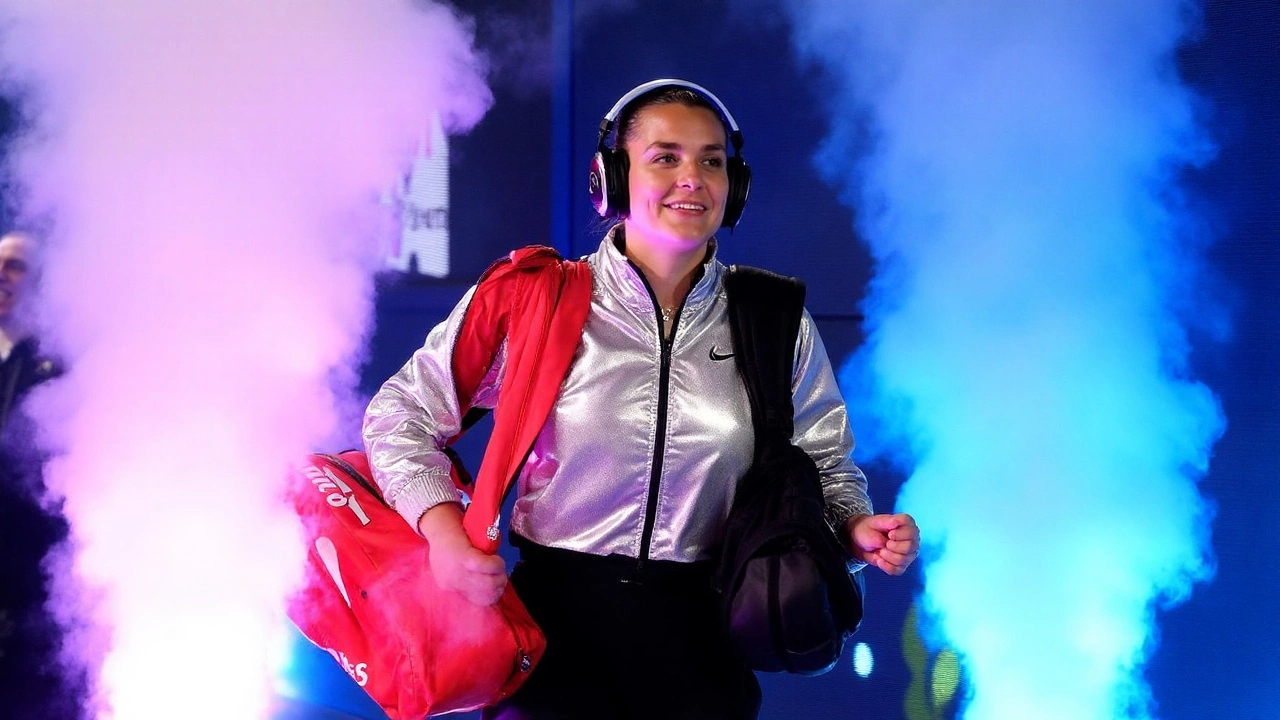Sabalenka powers into US Open quarters, keeps world No. 1
Aryna Sabalenka keeps ticking off the checkpoints that turn a title defense from a bold idea into something real. She hammered past Cristina Bucsa 6-1, 6-4 in the fourth round, then walked off court with more than a place in the US Open quarterfinals. By getting this far, she also secured her world No. 1 ranking for another week, no matter what Iga Świątek or Coco Gauff do from here.
Her scoreline against Bucsa told a simple story: fast start, clean finish. The first set lasted barely a blink as Sabalenka took control early with heavy first strikes and smart court positioning. The second set got trickier, but she kept the match in her grip, managed the rallies on her terms, and closed without fuss. It’s the kind of steady, low-drama tennis that wins majors in New York, where the wind swirls, the noise never stops, and focus matters as much as power.
Two days earlier, she beat Leylah Fernandez 6-3, 7-6 (2), a match that had its own small New York twist: a fan proposal in the stands mid-contest. It could have been a distraction. Instead, Sabalenka smiled, reset, and served out the drama. Afterward she joked there was no pressure on her boyfriend, Georgios Frangulis, who’s been a visible presence in her box. The moment was light, the tennis was not.
That blend—calm in chaos, ruthless between the lines—is why her title defense is drawing real attention. The last woman to successfully defend the US Open was Serena Williams. Plenty of great players have won here since, but none have gone back-to-back. It’s not that they forgot how to win. The calendar turns late, the season is long, and the city magnifies everything. Repeating in New York asks for more than great tennis. It asks for stamina, patience, and a short memory between points.
Sabalenka’s current run checks those boxes. Her baseline game remains blunt-force strong, but the big change is how she manages patches of turbulence. In years past, a rough service game or a noisy crowd might have opened the door. This time, she’s stepping away from the door and double-locking it. No spirals, no extended dips. If she gives up a break, she breaks right back. If she misses a chance, she creates another. It sounds simple, but it’s the difference between contending and defending.
There’s also the ranking backdrop. Świątek and Gauff have been perched close enough to strike, and the math was tight heading into New York. Reaching the quarterfinals took the suspense out of that storyline. Sabalenka will keep the No. 1 next to her name when this tournament ends, a small but meaningful piece of certainty in a Grand Slam that rarely offers any.

The weight of history — and why this run feels different
The women’s game has been deep and unpredictable in the past decade, which is great for fans but brutal for repeat champions. New York adds extra friction: late nights, shifting weather, heavy balls under the lights, and a draw full of counterpunchers and first-strike hitters. Slip for half a set and you can be out before you know it. That’s why Serena’s run of successful defenses stands out—and why Sabalenka’s push now carries real weight.
Her toolkit fits the city. She can shorten points with pace, but she also holds up in long exchanges when conditions slow the court. She doesn’t chase winners out of boredom. She earns them. The Fernandez match showed that balance: controlled aggression early, patience when the tiebreak demanded it. Against Bucsa, she didn’t overplay a lead or try to end rallies in two swings. She opened the court, then hit through it.
What’s driving the results goes beyond strokes. The mental side looks steadier. She absorbs a loud moment—like a proposal in the upper deck—without letting the match wander. She’s also treating milestones as markers, not finish lines. Quarterfinals? Good, next job. Ranking secured? Nice, next job. That mentality shrinks the spotlight and keeps the routine intact on a stage that tries to blow routines up.
There have been other stories floating around the grounds. Venus Williams took the court as the oldest woman in the main draw since 1981, another reminder of how long the sport can hold a champion’s fire. On the other end of the arc, former world No. 2 Petra Kvitová and former world No. 4 Caroline Garcia said their goodbyes with first-round exits—farewells that landed quietly on the scoreboard but not in the crowd. New York honors longevity, even on the days it doesn’t bring a win.
For Sabalenka, that mix of past and present creates a clear lens: what lasts is the work. Her practices this fortnight have been tight and purposeful. Her team keeps the chatter low. Frangulis in the box offers a steady point of focus. It’s less about a magic fix and more about showing up the same way every day, even as the stakes climb.
If you’re searching for signs that this defense might stick, start with the basics that decide hard-court matches in Queens:
- First-strike clarity: She is winning rallies with the first two or three balls, not waiting for help.
- Damage control on serve: Fewer free points for opponents, more depth and margin on big points.
- Shot tolerance: When a rally stretches, she is comfortable rebuilding the point instead of forcing it.
- Scoreboard management: She’s protecting leads and defusing mini-rallies before they become sets.
None of that guarantees a trophy. It does, however, travel well into the second week, where the quality spikes and breathing room disappears. Quarterfinals bring a different kind of pressure. You can see the finish line for the first time. The crowd senses it, too. That’s where composure meets courage. She’ll need both.
There’s also the matter of styles waiting ahead. New York can serve up a counterpuncher who lives off your pace one round and a fearless shotmaker the next. Sabalenka’s plan has to bend without snapping. That means accepting longer rallies when the ball gets heavy at night, then stepping inside the baseline the second a short ball shows up. She can’t let the match live on her opponent’s terms for long stretches. Not here.
The support around her matters, too. The defending champion’s box is a small city: coaches, physios, friends, and, this year, a boyfriend-turned-sounding board in Frangulis. The Oakberry founder has been a constant in her corner, and while no one wins a match from the player box, the calm it projects can steady tight moments. The lighter touches—the smile after the mid-match proposal, the joke that there’s "no pressure" on him—help keep the air in the room.
Ask players who have made deep runs in New York and they’ll tell you the same thing: nights drain you, even when you win fast. The recovery window shrinks with each round, the city keeps you up even when you’re trying to sleep, and the practice court becomes a lab for small tweaks, not big changes. Sabalenka’s habits—get in, get the reps, get out—fit that reality.
One more thread worth pulling: the way she has protected her ranking while carrying the extra weight of a target on her back. It’s one thing to hunt from No. 2 or No. 3. It’s another to be the one everyone circles in the draw, especially when two of the game’s best are close behind you in the math. Locking up No. 1 by the quarters doesn’t change the job on court, but it can clear mental clutter. You’re playing to win the US Open, not to defend a spreadsheet.
What comes next will hinge on the same pieces that brought her here—first serves that land heavy, returns that don’t blink, and a mind that lets a loud moment roll off her back. The field is still packed with threats, the nights are only going to get louder, and the margin for error is about to get thin. But through four rounds, the defending champion looks like herself. In New York, that’s the most dangerous thing a player can be.
